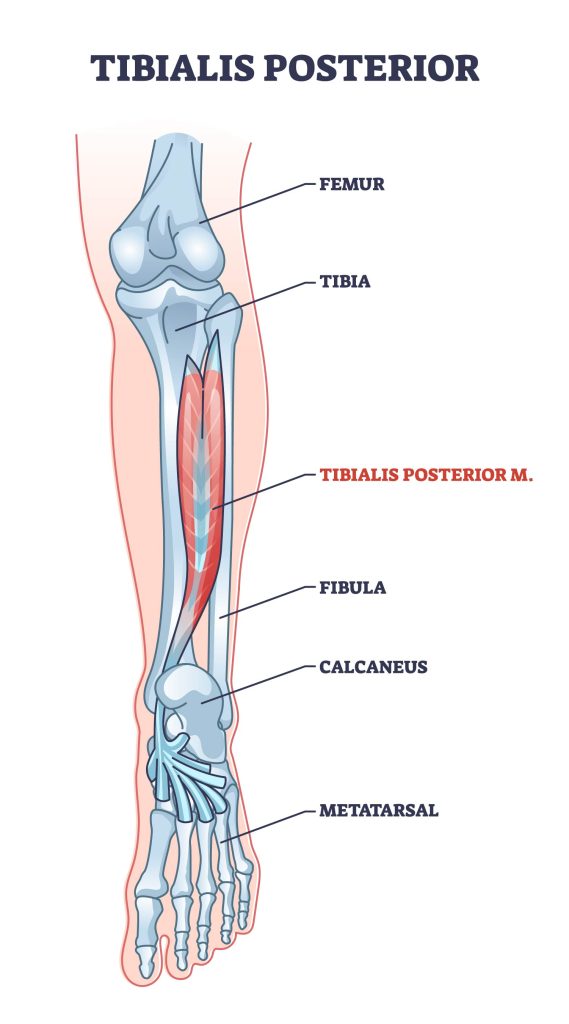Do you have pain in your lower leg? Learn more about Shin Splints
ÜBERSICHT
Tibial tuberosity syndrome (also known as tibial crest syndrome, because of the Latin “tibia”, the shin bone) refers to pain in the lower leg caused by inflammation of the muscles, tendons and bone tissue around the shin bone. The condition is also known as medial tibial stress syndrome (MTSS).
The pain associated with tibial plateau syndrome is usually dull and aching. It often begins as mild discomfort during or after physical activity. However, if the condition remains untreated, the pain can become more severe and permanent.
Shin splints are every runner‘s nightmare, but can also occur in other athletes who repeatedly strain their lower legs. Other sports that are often associated with shin splints are soccer, basketball and dancing. The syndrome also occurs in people who are not active, but who are suddenly exposed to high levels of physical activity.
Symptoms of tibial plateau syndrome
Symptoms of tibial plateau syndrome are usually dull pain and tenderness in the inner ankle, which mainly occur when running. The pain is not always so severe that sufferers have to interrupt their run. Sometimes the pain subsides as quickly as it came on. If the tendons and muscles are also irritated, the pain can also occur at night or during rest periods. The pain increases with prolonged walking or when changing direction quickly. Pressure on the inside of the foot in the area of the ankle can cause a crunching sound.
What can cause pain in tibial crest syndrome?
Overuse of the muscle
Tibial plateau syndrome is to be understood as an overuse syndrome. It is usually caused by irritation of the periosteum (=periostitis) in the area of origin of the tibialis posterior muscle, but also of the soleus muscle. As soon as you notice the first pain in the shin, you should definitely rest the muscle, as overuse can lead to muscle failure or flat feet.
Therefore, clarify your symptoms with a sports doctor in good time!
Inflammation or injury to the muscle
In most cases, the inflammation is not noticed immediately, as the affected person blames the shin splint pain on overuse of the muscle. This is why the true cause of the shin splints is often diagnosed far too late, when the pain is already very pronounced.
Incorrect training
In rare cases, tibial plateau syndrome is caused by excessive supination of the forefoot (when the runner rolls over the little toes while running). The long toe flexor muscle is overstretched and in this situation inflames the periosteum of the shin bone (tibia). Inexperienced runners who have just started endurance training are particularly frequently affected. The reasons for this can be incorrect running technique, unsuitable running shoes and too little or insufficient rest. Therefore, make sure that you choose the right running shoes for your running training and plan training breaks to prevent pain and inflammation.

How can I prevent tibial plateau syndrome?
In general, it is always better to prevent pain than to treat it. Here are some things you can do to avoid shin splints:
- Work on your running technique - incorrect strain during running often leads to incorrect strain on the tibia
- At the first sign of pain: take a break from training!
- Include strength training in your training plan!
- Ensure sufficient regeneration after training
How can shin splints be treated?
If you feel pain along the shin, you should definitely see a doctor! During an initial anamnesis, I will take plenty of time for you to identify the causes of your pain, define the diagnosis and suggest the necessary treatment. Together with your help, we will find the most suitable therapy concept for you. I will tell you more about proven treatment options below!
Physiotherapy
Before physiotherapy can be started, it is important to determine what problems exist, what the causes are and when exactly the pain in the shin occurs. Possible causes can be determined during a running/gait analysis. Once the treating therapist has gained an overview, a training plan can be drawn up and physiotherapy can begin.
A series of stretching and strengthening exercises for the calf, lower leg, thigh and hip muscles is part of physiotherapy. The aim is to reduce the strain on the shin structures in order to prevent problems later on. If posture or misalignments are diagnosed as the cause of shin splints, these can be eliminated or even corrected with the support of physiotherapy.
The healing time varies from patient to patient; it can be several weeks or even months.


Blackrolling
Shin splints can also be treated with a so-called“black roll” (also known as a fascia roll ). The Blackroll helps to relax and regenerate the muscle. The fasciae, which are the bands of tissue that connect different muscles, are loosened when rolling over the Blackroll, as the rolling loosens adhesions in the muscle sheaths. Rolling promotes blood circulation and metabolism in the muscles, thus ensuring a successful result. It is important that inflammation has already subsided!
Leukotape
Taping with Leuko or Kinesiotape can relieve the pain of a shin splint or shin splints syndrome, as it stabilizes the joints through its supporting effect and also helps to stimulate circulation and generate heat.
Correct application is crucial, as the tape must not be wrapped too tightly or too loosely along the edge of the shinbone. You should therefore consult your doctor before applying the tape for the first time to ensure correct treatment of shin splints.

Sports insoles
As tibial plateau syndrome is often caused by misalignment or incorrect movements as well as walking on surfaces that are too hard, special insoles can help to improve your condition and relieve your pain. The aim of the insoles is to distribute the pressure evenly over the entire foot to relieve overloaded structures. The insoles should also support correct movement and rolling and minimize irritation to the shin.
Custom-made insoles can be purchased from doctors or in specialist stores with specialist staff. In most cases, the insoles need to be customized.
Shock wave therapy
If you suffer from severe pain due to tibial plateau syndrome or previous treatments have not worked, shock wave therapy using high-energy electric shock waves may be a suitable solution for you. The treatment is carried out in my practice and has virtually no side effects.
The device delivers shock waves to the target tissue using a pen-like application method that is placed on the surface of the skin in the area where the pain is felt. Electric shock waves are high-energy sound waves that can be both heard and felt. Their intensity can be adjusted depending on the patient’s sensitivity. Initially, a low intensity is always selected, which can then be slowly increased if well tolerated, as irritated and inflamed tissue reacts particularly sensitively to electroshock waves.

Stretching
Stretching the shin and calf muscles can reduce the pain of shin splints. As stretching alone is often not enough, it is suggested in combination with physiotherapy.
Training reduction and compensatory sport
If you feel pain along the shin during running, this may be an initial indication of shin splint syndrome. Incorrect running technique sometimes proves to be the cause of a shin splint, as do incorrect loading of the shin, unsuitable running shoes and overuse of the muscles. It is therefore important to act in good time and switch to alternative training so that the pain does not get the upper hand! Runners are also advised to take a break from training to minimize the pain.
In order to find the right therapy for your symptoms, a detailed assessment by an orthopaedist is required! Contact me – together we will find the most suitable therapy concept for you!